- Policy
- Posted
The Lay of the land
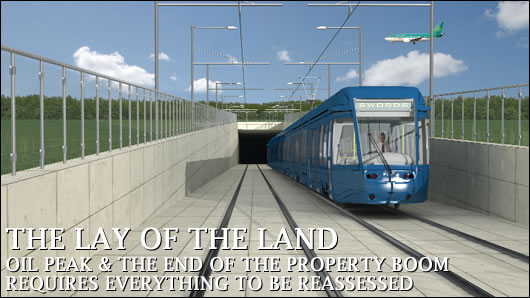
The unprecedented development seen in Ireland in the Celtic Tiger years was fueled by the availability of cheap, abundant fossil energy. As the boom ends, the state is attempting to boost the economy with investment in larger than ever infrastructural projects which will not benefit many of the tax payers who are funding them, and crucially don’t recognize the extent to which peak oil production will affect their viability, as Richard Douthwaite reveals.
The Irish economy is not in crisis yet but what the markets call “the fundamentals” are deteriorating by the month and some serious planning needs to be undertaken now if a serious recession is to be averted. The most worrying sign is that the annual rate of increase in residential mortgages is continuing its downward trend, declining to 17.9 per cent in July, compared with 27.6% a year earlier. The value of the residential mortgages taken out in the first six months of 2007 was over 25 per cent lower than in the same period in 2006.
In the construction sector, of course, the fall has already led to lay-offs and a drop in activity. However, the whole national economy is being affected too because fewer mortgages mean that less money is being put into circulation and that in turn means that there’s less extra money for firms to share about. Business profits will be lower at the end of the year.
The root of the problem is that we have an economic system in which one sector or another has to be getting deeper and deeper in debt if incomes are to grow. Consequently, if the total value of mortgages being taken out falls below the rate at which existing mortgages are being repaid, the money supply will contract unless some other sector of the economy increases its borrowing to compensate for the decline. And, if the money supply contracts, the national level of economic activity will fall as well. In short, we'll get a depression.
The state should be planning to deal with the borrowing short-fall if the mortgage take-up continues to decline. After all, if consumers are worried about their jobs (and a survey at the end of August indicated that the mood among Irish consumers was at its gloomiest for almost four years) and business profits are not as brilliant as expected, is anyone going to borrow to invest without governmental encouragement? The state does not have to do all the borrowing itself, but it has a duty to ensure that the total amount of borrowing is adequate to keep the economy moving along. And it must discharge that duty long before things get really bad.
It's also important that, if the government is going to encourage people to invest, or to invest itself, the money is well spent and makes the country more sustainable. Projects should not be assessed solely in terms of value for money - that’s the old thinking. In today’s world, heightened sustainability means reduced fossil energy use and every project should be viewed from that perspective. The energy a project saves in proportion to the energy invested in building is now much more important than achieving the highest financial return.
Indeed, using monetary costs to compare projects can be very misleading. A recent report showed that 23% of the cost of a typical new road was down to the cost of the land, the highest figure in Europe. But does it matter if the landowners are being overpaid? My view is that it does matter, but not very much because any excess taken out of our collective pocket and put into a few private ones could be taxed back out of those private pockets if we had the mind to do so. In any case, it’s only money. No real resources are involved. As a result, if government planners just compare the cost of projects in money terms they are likely to come up with the wrong answers. It’s the cost in terms of the resources that are actually used they should be comparing, not the amount of money that gets shuffled about.
Now that the world's production of “conventional” oil has probably peaked – see Graph 1 – and fossil energy use has to be restricted for climate reasons, if an infrastructural project doesn’t save enough energy to give a good return on the energy used in its construction, it should not be built unless there is some serious environmental or social justification for doing so. How would the Dublin Port Tunnel stack up in those terms? How long will it be before the fuel saved because the vehicles going through it are not causing so much congestion in the city itself is equal to the amount used in its construction?
The danger in calling on the government to fend off a depression by embarking on major infrastructural projects is that it will give the go-ahead to projects it has in the pipeline, despite the fact that these were developed under business-as-usual, the-economy-will-continue-to-grow assumptions which are completely inappropriate for the new circumstances. As a result, most projects on the drawing board embody too much energy to give a good return in energy terms if, as a result of restrictions on the use of fossil fuels, the economy begins to contract rather than expand. Almost every road project would fail to clear the Energy Return on Energy Invested (EROEI) hurdle as the savings the planners promise are in terms of people's time rather than energy use.
Rail projects might fare a little better. Consider, for example, the biggest project on the drawing board, the 17km metro line running from St. Stephen’s Green north through Ballymun and the airport out to Swords. This is estimated to cost e5 billion, a figure which would make it by far the most expensive infrastructure project in the history of the State - at least three times more costly than the M50 (e1.6 billion) and six times more than either the two Luas lines or the Port Tunnel.
The Railway Procurement Agency (RPA) was unable to tell me just how much of this cost is attributable to land acquisition so I could get some idea of the amount of fossil energy that would have to be invested in the project. However, its spokesman, Tom Manning, said that, although no formal EROEI analysis of the project had been carried out, as its key objective was to get people out of their cars, the result of such a study might well be favourable.
No-one knows whether the same can be said of the other major Dublin rail project, Irish Rail's 5.2km Dart Underground line linking the current Dart line just north of Connolly Station to the Kildare commuter line at Heuston Station so that trains from fast-growing towns in Kildare and Meath, including new towns such as Adamstown and Ongar can come into the city centre. The purple line passing through Pearse Station and St. Stephen's Green = shows the route on the diagram. No costing of the project has been released but its viability is based on the assumption that the number of passenger journeys by DART and commuter rail will rise from 25 million today to 100 million.
Will those numbers ever be reached? My fear is that the costly rail and tram projects being developed for the Dublin area are cubs of the Celtic Tiger and cannot survive if their parent is no longer around to feed them since they are based, like the plans for expanding the airport, on the assumption that rapid growth will continue in an energy-abundant world.
What might be much more appropriate for a low-energy, low-carbon future is the construction of a network of light, self-powered trams, such as those made by Parry People Movers in England. The big difference between a light tram system and the LUAS is that the LUAS is powered by externally-generated alternating-current electricity which means not only that a network of overhead cables has to be installed but that every street through which the trams are to pass have to be dug up and all pipes and wires running under them re-routed. Remember the protests from the hotels along Harcourt Street when the LUAS Green Line was being built? The wires and pipes have to be moved not because it won't be possible to dig up the street again once the tramlines are there (It will – I've watched it being done in Vienna) but because the alternating current might induce dangerous currents to run through them. The re-routing adds hugely to the cost.
Light trams, on the other hand, can either generate their own electricity or, in the case of some versions of the Parry People Mover tram, take it on board at every stop. (The power these trams take on at stops is used to give their onboard flywheels a boost so that they are spinning fast enough to get the vehicle on to the next stop). According to Jimmy Skinner, who runs the Sustainable Transport Company in London and is a shareholder in Parry, one option for Dublin would be to power light trams initially with compressed natural gas and to replace this with methane produced by bio-digesting the city's organic waste when that became available. He points out that several cities including Stockholm and Lille already use methane from biodigesters to run their public transport and that a July 2006 report from the National Society for Clean Air in Britain estimated that if the 30 million dry tonnes of agricultural manure and food wastes generated in the UK each year were turned into methane, it would deliver the energy equivalent of 6.3 million tonnes of oil, enough to meet around 16% of the country's total transport fuel demand.
The compressed methane would be burned in a conventional petrol engine which would be set up like that in a hybrid car, so that it either accelerated the flywheel or powered the wheels directly. Whenever the brakes were applied, the energy from the movement of the tram would be stored in the flywheel to be used, in combination with the gas engine, whenever the tram was accelerating or going up an incline. Used this way, a two-litre engine can power a fifty-passenger vehicle and the energy equivalent of a gallon of petrol can carry 50 passengers 15 miles. A bus would only manage half the distance on the same amount of energy and a conventional heavy railcar two miles.
Skinner claims that trams are inherently more energy efficient than buses. “Trams running on steel wheels on steel rails are at least three times more energy efficient than buses running on rubber wheels on tarmac” he says. Trams also last longer, thanks to the lower stresses imposed on them and the smooth running on rails. They normally have a life of over 30 years compared with up to 13 years for a bus. And, since trams are not diesel powered, they do not release the tiny particles which are so damaging to people's lungs.
Despite these advantages, he despairs of getting Dublin to adopt light trams “now that they are accustomed to spending huge sums on conventional trams.” He prefers to concentrate on “places like Cork or Galway where they would not want to spend that sort of money.” The cost differences are substantial, with light trams costing about a sixth of their conventional LUAS-type equivalent.
Regardless of the type of tramway that gets built, the site value of properties in the areas it serves will increase. In Dublin an analysis of the influence of the Luas on property prices carried out by Douglas Newman Good revealed that from January 2002 to the end of 2004 year, houses within walking distance of a tram station increased in value by a minimum of 15% more than houses without easy access to the new rail system. =
The study concentrated on three areas and the results of the difference in price change in those areas are listed in the table below:
These increases in site value were, of course, a free gift from the taxpayer to residents and businesses lucky enough to be located in the areas the LUAS served. DNG did not go on to estimate how big a gift this was, but there is no doubt that it was several times bigger than the cost of building the two LUAS lines.
A London property developer, Don Riley, estimated the gains made there when the Jubilee underground line was extended. Taking five of the ten new stations as a sample, and drawing on available valuations and sales records, Riley estimated the average increase in site values per unit area within 400 yards of each station, then between 400 and 800 yards, and then between 800 and 1000 yards, converted the averages to totals, added the results, and extended them to the other stations. He concluded that the railway, which cost the taxpayers £3.5 billion, had increased site values by a conservative £13 billion. An insignificant part of that gain - some £180m - was paid towards the cost of the line by the developers of one small area affected by it: Canary Wharf. The vast majority of landowners along the route enjoyed a large windfall with no contribution whatsoever.
In Dublin, the RPA has collected e150 million in cash and cut-price land transfers to cover half of the cost of extending the LUAS Green Line from Sandyford to Cherrywood via Leopardstown. It has also covered half the e80 million cost of extending the Red Line out to Citywest. In both cases, property developers along the routes made the contributions and Dun Laoghaire Rathdown County Council has introduced a Section 49 levy to ensure that any landowners on the Green Line in its area who have not stumped up voluntarily do not get away scot-free.
The problem with these arrangements is that they only capture a fraction of the increase in site values being created. For example, the Section 49 levy announced by Dublin City Council to help cover the cost of Metro North is expected to raise a mere e113 million, less than a tenth of the cost of the project in the Council’s area. The owner of every house within a kilometre of the line will have to contribute e2,540, commercial buildings will pay e22.35 per square metre and shops e32.20 per square metre.
Since the planned LUAS extensions will be financed in large part by developers, the lines will go wherever they say rather than where there is greatest need. So, although the network map shows the Green Line being extended to Bray, it might never get there as, apart from Section 49, there is no method of funding its construction in an established community other than with a central government grant.
A serious drawback with relying on developers for funds is that when the property boom ends, railway construction will grind to a halt as well. Ideally, of course, it should be the exact opposite, infrastructure going ahead rapidly whenever other types of construction are flat. The solution to this is to introduce a proper site value tax to ensure that whenever site values rise in an area, the community or project that generated them gets its full reward from every property owner.
As the property bubble deflates, site values will collapse. The best way of restoring them, or at least limiting their fall, might be to replace stamp duty with a site value tax and use it to fund local infrastructural improvements. The Danes levy a site value tax on all the land in the country at rates set by the relevant local authority. These vary between 1.6% and 3.4%. Although the tax is charged on the value of house sites, anyone over 65 can defer payment and the amount owing will be collected when the property changes hands when they move or die.
If such a tax was introduced in Ireland, the challenge for each local authority would be to ensure that the revenue it brought in was spent on projects which increased site values and thus brought in extra revenue in succeeding years. This would automatically mean that competing projects were no longer assessed on the basis of what central government might be persuaded to pay, but on what made the community a more desirable place to live and do business.
Participatory budgeting should be used to allocate the tax income between projects. Each land-tax payer could be asked to divide their annual payment between competing proposals. In the early 1990s, Galway County Council spent £2.5 million, £14,000 per islander, a lot of money at the time, building a new pier on Inishbofin. None of the money was its own: 30% came from central government and the rest from the EC specifically for the job. Consequently, no-one was able to say "We've £2.5 million here to spend in any way we like on capital works in Bofin, how can we make best use of it?" Had the islanders had control over the money, they would have extended the existing jetty rather than building a new one and used the surplus funds for a slaughterhouse to official standards, a dairy and several other projects.
In a low-energy world, we won't have the resources to waste on running and maintaining over-specified transport systems. Nor will we be able to afford to make bad investment decisions. All our systems - monetary, fiscal and decision-making among them – need to be reconfigured to enable us to make a satisfactory transition to that world.
- Articles
- policy
- The Lay of the Land
- Richard Douthwaite
- Oil Peak
- fossil fuels
- celtic tiger
- economic downturn
- mortgage
- property boom
Related items
-
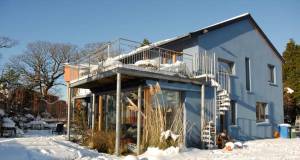 Out of the blue - a passive revolution
Out of the blue - a passive revolution -
Ireland joins whole life carbon data initiative
-
WorldGBC launches green building policy principles for governments
-
 Grant invests in biofuel tech for oil boilers
Grant invests in biofuel tech for oil boilers -
 Oil heating sector pivots to biofuels, but green groups raise concern
Oil heating sector pivots to biofuels, but green groups raise concern -
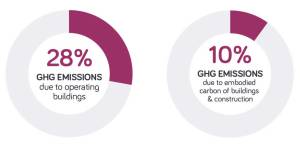 Architects call for urgent climate action ahead of COP 26
Architects call for urgent climate action ahead of COP 26 -
 New retrofit finance available in Waterford
New retrofit finance available in Waterford -
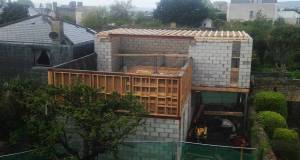 Work underway on ‘crowd funded’ passive house
Work underway on ‘crowd funded’ passive house -
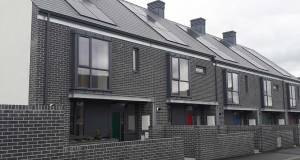 Cuckoos & magpies: state house-buying hits record
Cuckoos & magpies: state house-buying hits record -
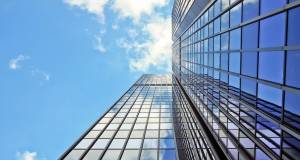 Blind & shutter group calls for Part B changes
Blind & shutter group calls for Part B changes -
 Wales votes to cut emissions 80%
Wales votes to cut emissions 80% -
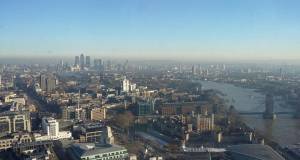 New research finds air pollution particles in human placentas
New research finds air pollution particles in human placentas

